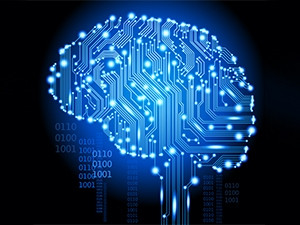
The US military's Defense Advanced Research Projects Agency (Darpa) has revealed efforts to develop an implantable neural interface to connect humans directly to computers, effectively turning soldiers into cyborgs.
While Darpa's interests are primarily military, it says the Neural Engineering System Design (Nesd) research programme could drastically enhance neurotechnology research capabilities and build a foundation for new therapies.
"Today's best brain-computer interface systems are like two supercomputers trying to talk to each other using an old 300-baud modem," says Philip Alvelda, Nesd programme manager.
The service offered by existing neural interfaces - at least those approved for human use - is "noisy and imprecise," says Darpa, because these interfaces currently "squeeze a tremendous amount of information through just 100 channels," each of which aggregates signals from tens of thousands of neurons at once.
Nesd, on the other hand, aims to develop systems to "communicate clearly and individually with any of up to one million neurons in a given region of the brain".
Potential applications of the end results, if successful, include devices that give users with sight or hearing impairments the option of channelling digital visual and auditory information into their brains.
So many hurdles
Yet Darpa's visions for Nesd, while captivating, are extremely ambitious.
Making these visions reality, let alone viable outside of a research setting, requires breakthroughs across an expansive array of disciplines, including neuroscience, synthetic biology, low-power electronics, photonics, medical device packaging and manufacturing, systems engineering, and clinical testing, Darpa admits.
Nesd researchers will also need to develop advanced mathematical neuro-computation techniques, first to "transcode high-definition sensory information between electronic and cortical neuron representations," and then to "compress and represent those data with minimal loss of fidelity and functionality," Darpa adds.
Focusing discussion around Nesd's medical possibilities, Darpa has avoided illuminating why a military agency is undertaking this development, remaining secretive about the programme's potential military applications.
Share